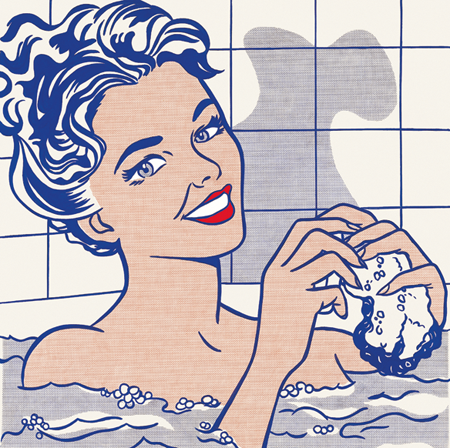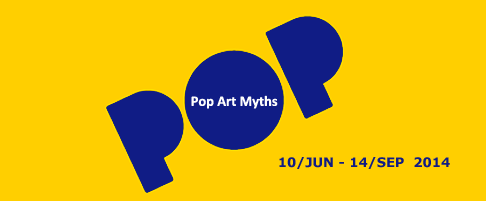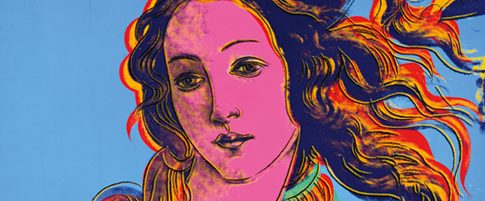Pop Art Myths

The emergence of Pop Art in the late 1950s and early 1960s was one of the most liberating moments in the history of art. Its explicit endorsement of the new culture of technology and consumerism demolished the heroic, subjectivist aspirations of previous avant-garde movements and reintegrated art and the real world.
With the incessant reciprocal exchange between art and every manner of objects from visual and popular culture, Pop Art brought an end to the division between “high” and “low” culture and opened up a new debate over the relationship between the aesthetic and the anti-aesthetic.
For Pop Art, any image was recyclable, and every object could become art. Its true objective was to offer a new interpretation of the image in contemporary culture.

Roy Lichtenstein (1923 - 1997) Woman in Bath
- Año
- 1963.
- Técnica
- Oil on canvas. 173,3 x 173,3 cm.
- Propiedad
- Museo Thyssen-Bornemisza, Madrid.
- Inv.:648 (1978.92)
And yet Pop Art conceals a fascinating paradox: On the one hand, it was an innovative movement that broke new ground in the path towards postmodernity; but at the same time it was clearly oriented towards the past. Pop Art’s eagerness to connect with tradition using new artistic means derived from television, advertising, or comics focused above all on a reevaluation of artistic styles and genres and on the reinterpretation of the works of Old Masters to whom Pop artists would pay homage or whom they would subject to irreverent parody.
Pop Art Myths eschews simplistic national labels and presents the Pop Art phenomenon as a whole in order to track down the common sources of international Pop Art, in line with the comprehensive spirit that guides our collection and our museum. From the pioneering works of British and American artists to the Pop derivations that surfaced in France, Germany, Italy, and Spain, we hope to make manifest the fact that, to a large extent, they all shared the same ambition of making a break with the past but also of reflecting on art and reality, on art and tradition, and on art and museums.





